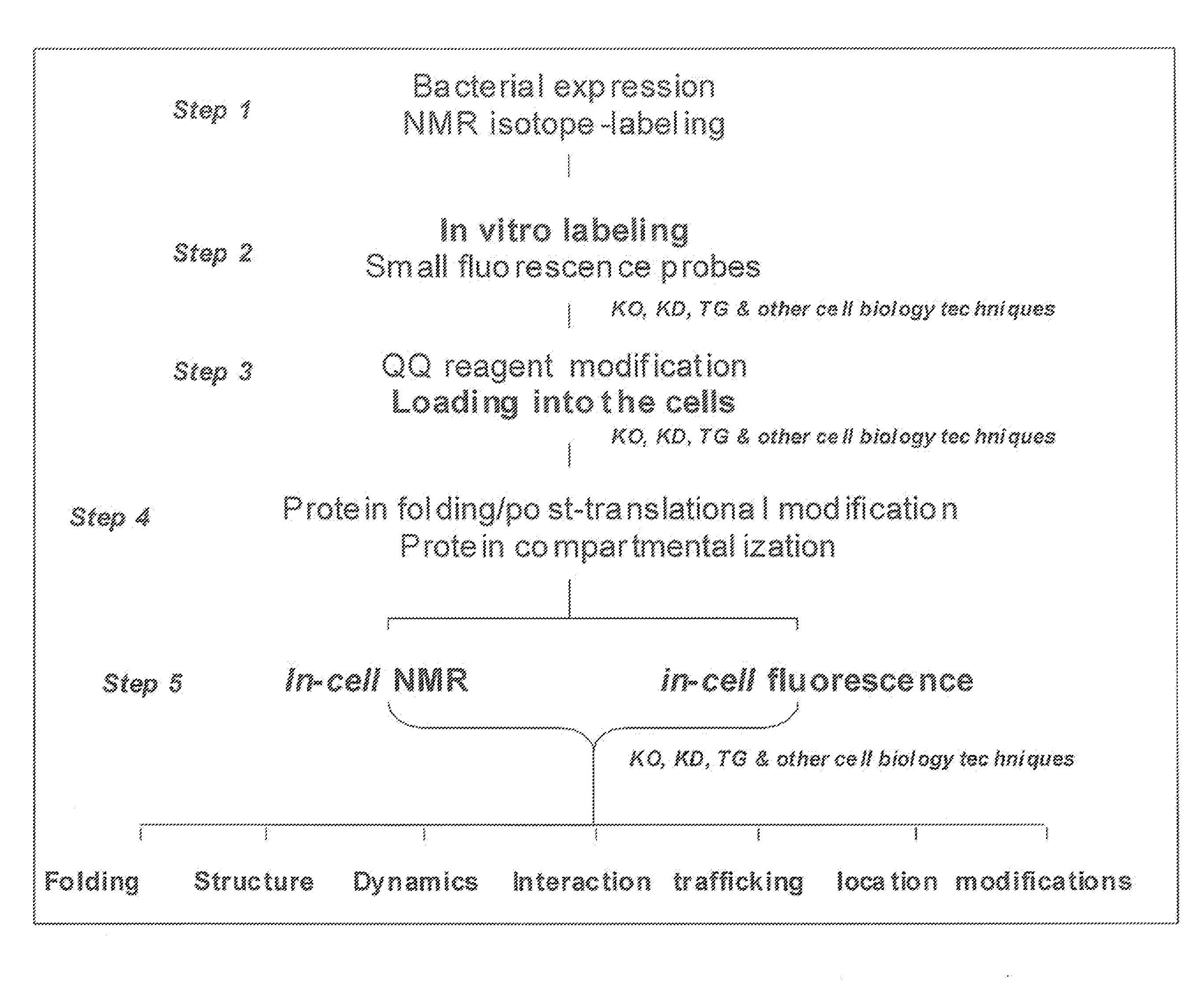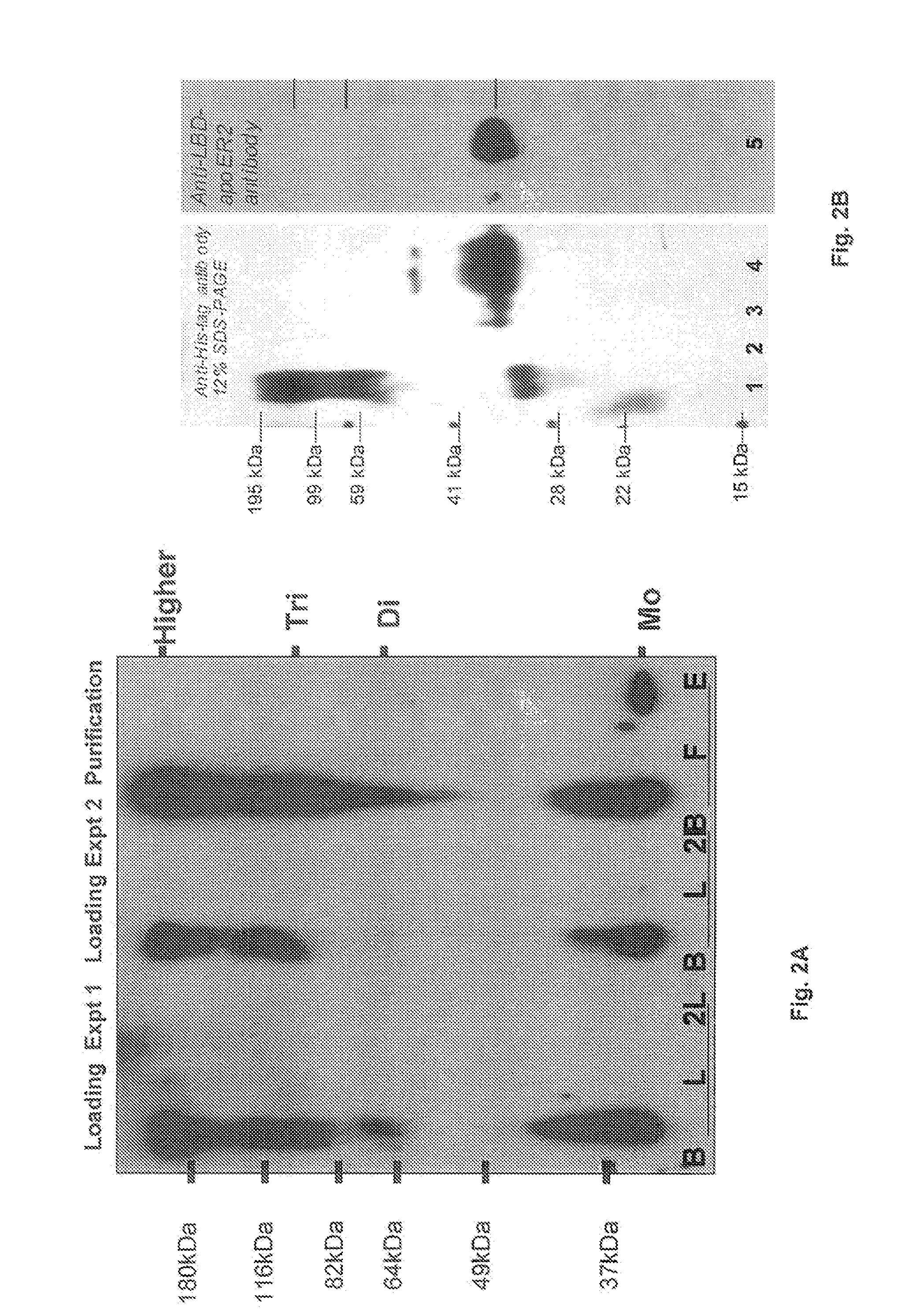Method and composition for a protein transduction technology and its applications
a technology of protein transduction and protein, applied in the field of protein transduction, can solve the problems of inability to study protein folding in living cells, lack of protein transduction technique, disease and dysfunction, etc., and achieve the best protein transduction efficiency, efficient protein delivery, and better viewing of protein within cells
- Summary
- Abstract
- Description
- Claims
- Application Information
AI Technical Summary
Benefits of technology
Problems solved by technology
Method used
Image
Examples
example 1
Experimental Methods Reagents:
[0065]Polyethylenimine (PEI) 600, 1200, 2,000 (2K), 8,000 (8K), 12,000 (12K), 25,000 (25K), and 60,000 (60K) are purchased from Sigma-Aldrich. Lipids: DOTAP, DOPE, POPC and DMPE are purchased from Avanti polar lipids, Inc.
[0066]Enhancer: MG132 protease inhibitor cocktail are purchased from Sigma-Aldrich. DMSO, CaCl2, growth factor and Na2HCO are also purchased from Sigma-Aldrich. The addition of these enhancers significantly enhanced cell loading of cationized proteins.
[0067]Other enhancers can be used, including cell membrane surfactants. These materials can be purchased from Fisher.
[0068]Protease inhibitor Cocktail is purchased from Sigma (Cat# P1860).
Antibodies:
[0069]Goat anti-apoE poly-Ab and mouse anti apoE mono-Ab are purchased from Chemicon international. Anti LRP8 mono-Ab is purchased from Abnova Corporation. Goat anti 6× His-tag poly-Ab is purchased from Innovative Research. Anti RAP 7F1 is purchased from Innovative Research.
[0070]Anti goat IgG...
PUM
| Property | Measurement | Unit |
|---|---|---|
| concentration | aaaaa | aaaaa |
| volume | aaaaa | aaaaa |
| volume | aaaaa | aaaaa |
Abstract
Description
Claims
Application Information
 Login to View More
Login to View More - R&D
- Intellectual Property
- Life Sciences
- Materials
- Tech Scout
- Unparalleled Data Quality
- Higher Quality Content
- 60% Fewer Hallucinations
Browse by: Latest US Patents, China's latest patents, Technical Efficacy Thesaurus, Application Domain, Technology Topic, Popular Technical Reports.
© 2025 PatSnap. All rights reserved.Legal|Privacy policy|Modern Slavery Act Transparency Statement|Sitemap|About US| Contact US: help@patsnap.com



